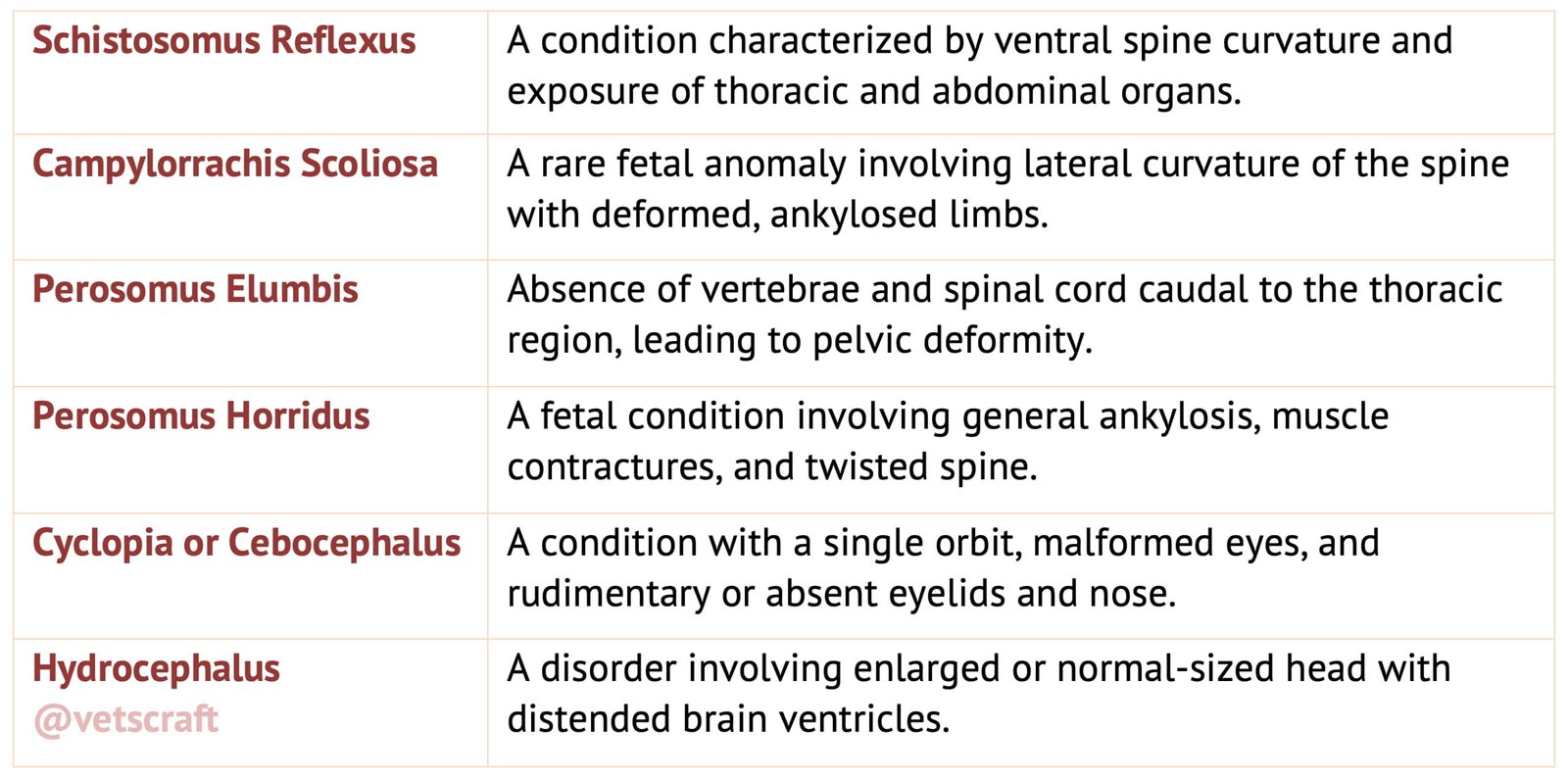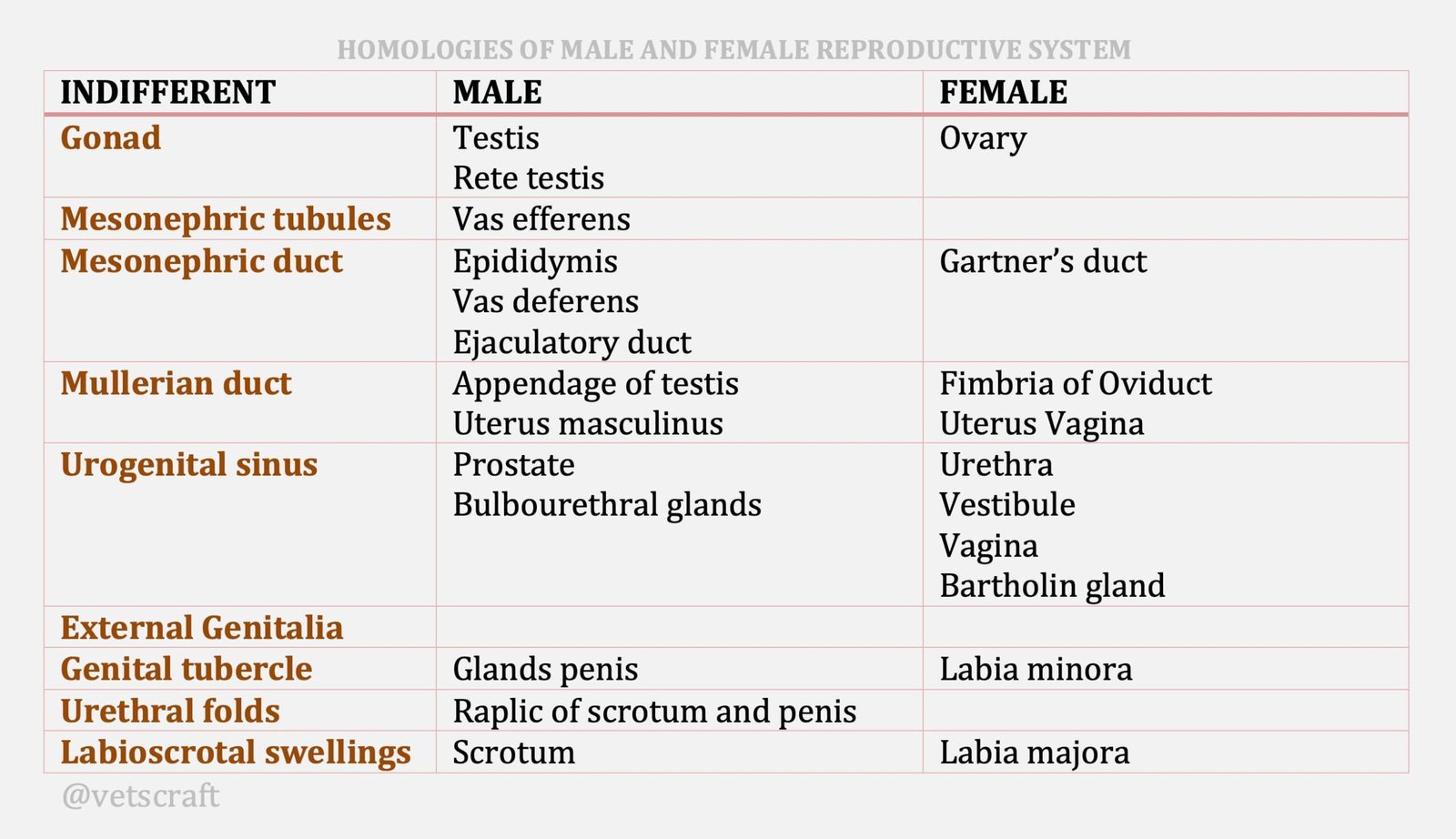TABLE OF CONTENTS
Anomalies of the Trunk
Anomalies of the trunk in animals include schistosomus reflexus, campylorrachis scoliosa, perosomus elumbis and horridus, cyclopia, and hydrocephalus.

Anomalies of the trunk are:
- Schistosomus reflexus
- Campylorrachis scoliosa
- Perosomus elumbis
- Perosomus horridus
- Cyclopia or cebocephalus
- Hydrocephalus
Schistosomus Reflexus
Schistosomus reflexus is seen most commonly in cattle, but in rare cases may be observed in sheep, goats, and swine.
It is characterised by marked ventral curvature of the spine so the occiput of the head lies near the sacrum. The body and chest walls are bent laterally and the thoracic and abdominal viscera are exposed.
In schistosomus reflexus cases:
- The pelvis is deformed
- The liver is abnormal in shape and cystic
- The rumen is occasionally distended with fluid the limbs are usually ankylosed and rigid
Campylorrachis Scoliosa
Campylorrachis scoliosa is a fetal monster, rarely seen in cattle and swine, characterised by a lateral curvature of the spine. The limbs are usually deformed and ankylosed.
Perosomus Elumbis
Perosomus elumbis seen occasionally in cattle and swine; a lack of vertebrae and spinal cord caudal to the thoracic region. The monster has a small flattened deformed pelvis with strongly ankylosed and flexed hind limbs and atrophy of the muscle of the rear quarters.
Perosomus Horridus
Perosomus horridus is a bovine fetal monster with general ankylosis and muscle contractures. external examination by a short spine due to marked double “S” Shaped lateral twisting of the vertebrae.
Cyclopia or Cebocephalus
Cyclopia or cebocephalus is a condition of single orbit in which global tissue is absent or rudimentary or in which the eyeballs vary from a single apparently normal eye thorough all degrees of doubling to one consisting of two complete but small adjacent globes.
Eyelids are rudimentary or absent and the noses usually absent or in the form of tubular appendages placed above the centrally located eye.
The rudimentary nose does not communicate with the pharynx the skull is usually small and the lower jaw being longer than the defective upper jaw is curved dorsally at its cranial end.
Hydrocephalus
Hydrocephalus seen in Herefords, Ayrshires, Holsteins and other breeds.
Hydrocephalus is characterized by the birth of “dummy” or “bawler” calves that are unable to nurse properly and die in several days.
The heads may be enlarged or normal in site but section of the head and brain reveals distended ventricles.
It associated occasionally with hydramnios, dwarfism and high copper levels in the liver. This is due in an uncomplicated form to a simple autosomal recessive gene. It is possible that some of these cases of hydrocephalus might be associated with BVD-MD or blue tongue viruses infecting the bovine fetus.

